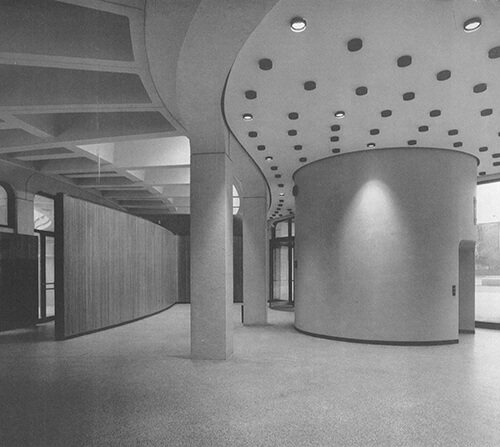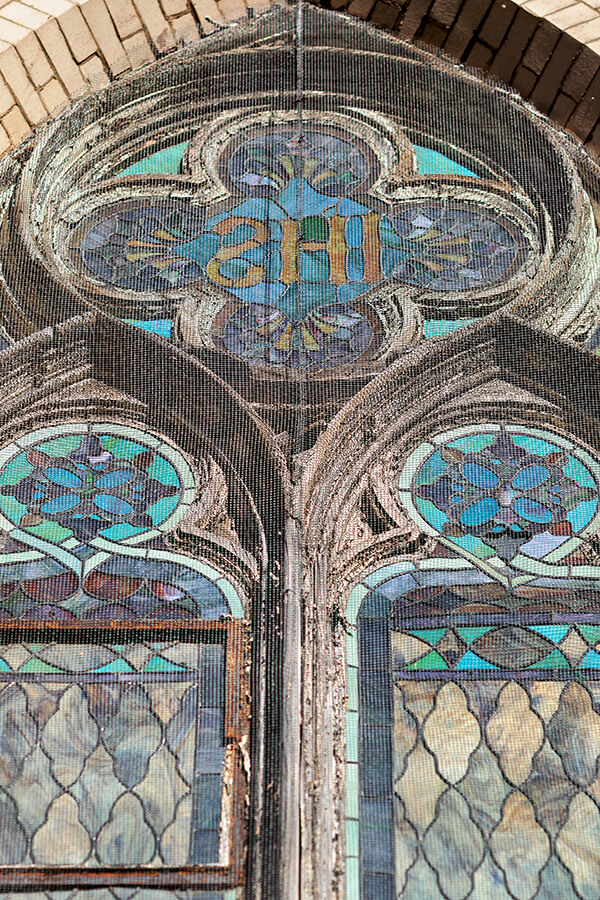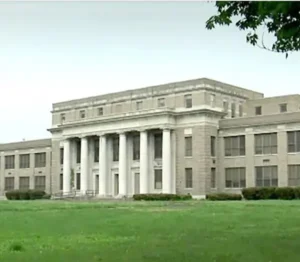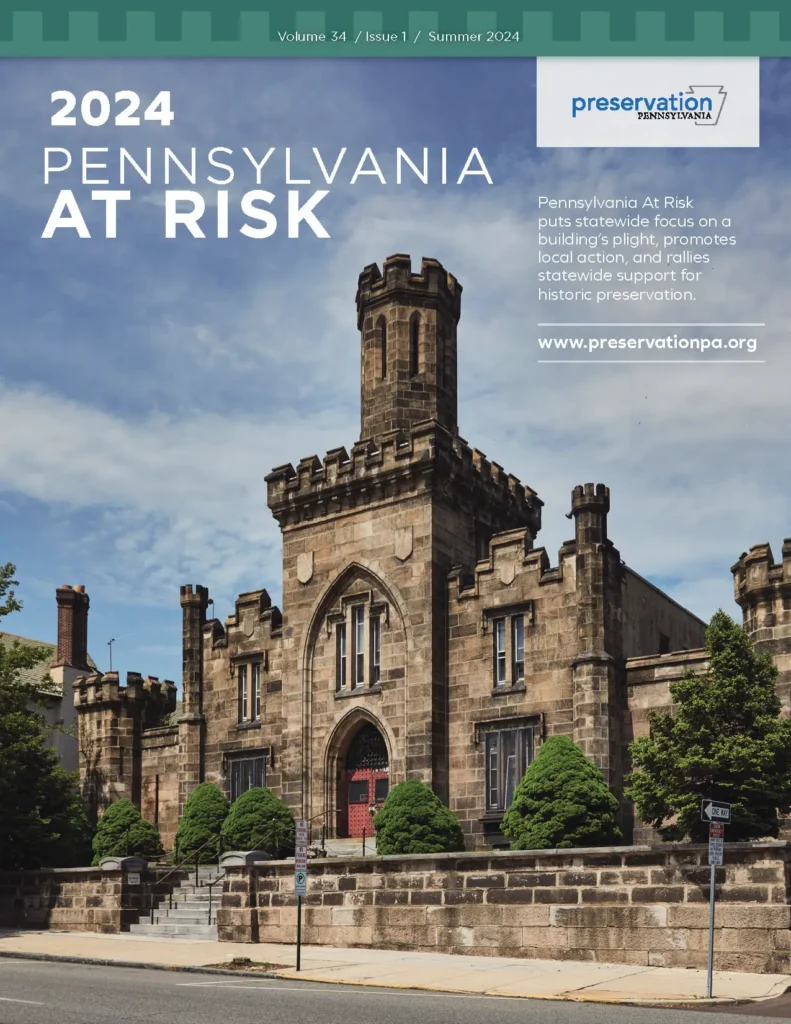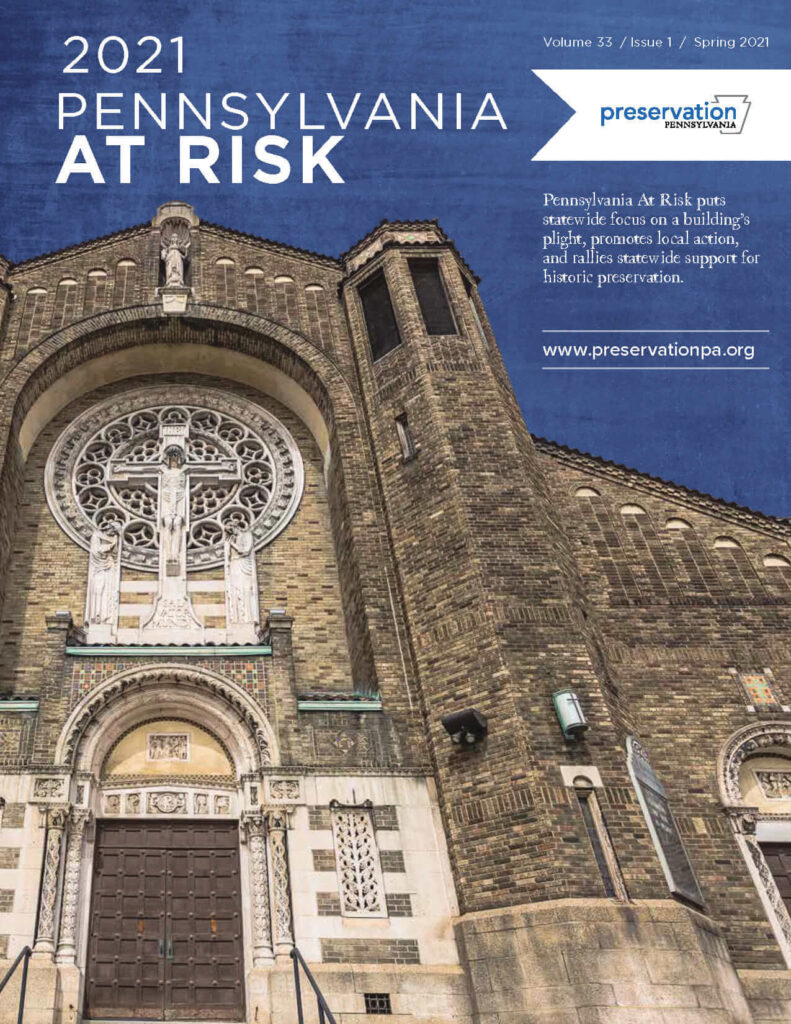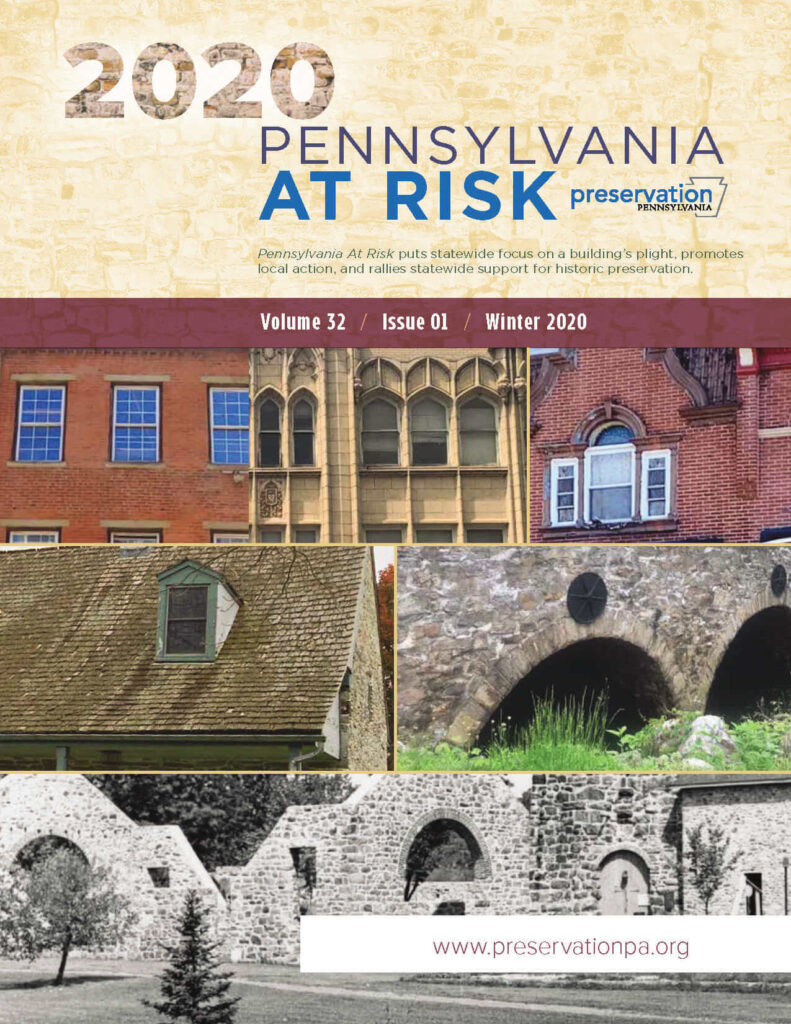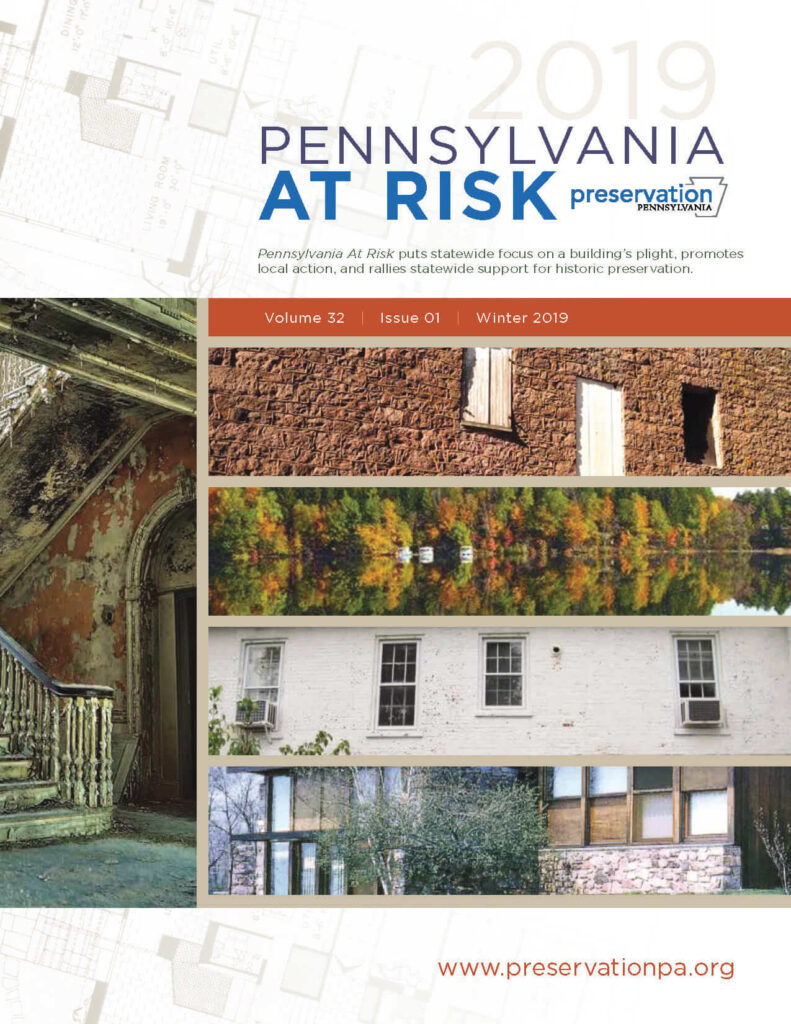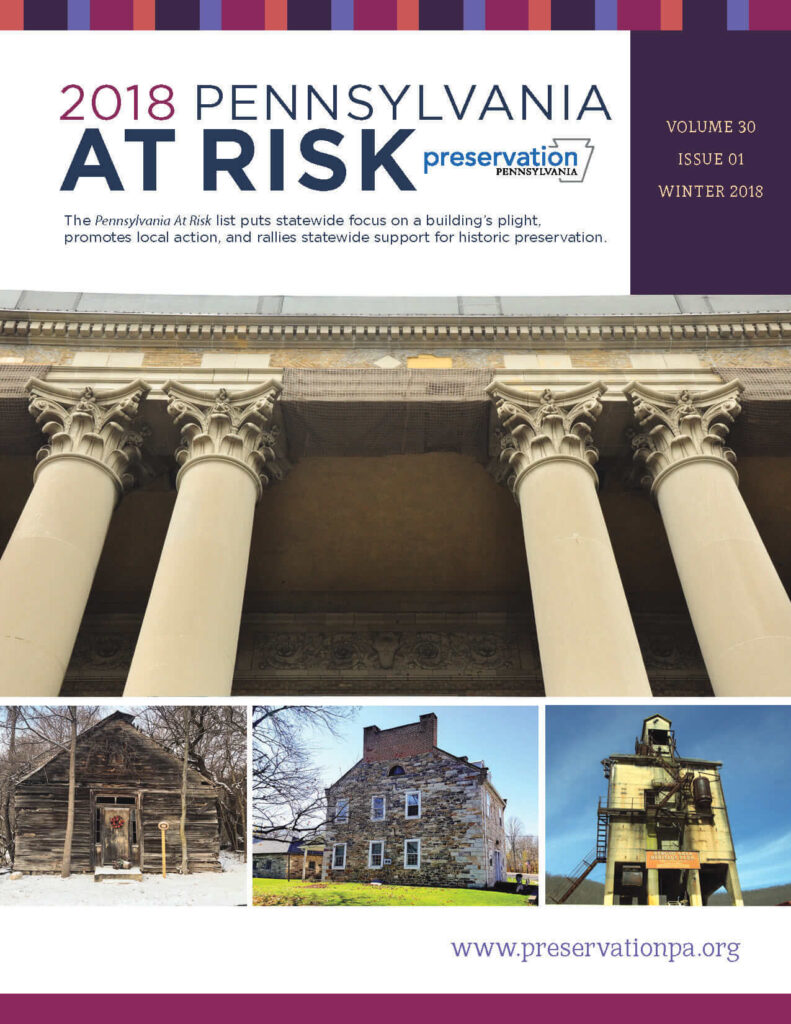2025 PENNSYLVANIA AT RISK LIST
“This year’s Pennsylvania At Risk list reminds us that historic places don’t have to be perfect to be powerful. Some are worn, some are complicated – but all still have stories to tell and value to offer. Rather than rushing to erase them, we have the opportunity to reimagine them. The most inspiring preservation efforts often begin when someone dares to see potential where others see a problem.”
— Mindy Crawford, Preservation Pennsylvania Executive Director
The Moore-Irwin House in Upper Merion Township is a rare surviving link to multiple eras of Pennsylvania history, from its likely origins as a c. 1750 log structure to its Colonial Revival renovations by celebrated architect Richardson Brognard Okie. Once the possible site of General Peter Muhlenberg’s quarters during the Valley Forge encampment and visited by George Washington, the house later served the community as a cultural center and home to the township’s Parks and Recreation Department. It remains the only historic site in public ownership in a township where much of the past has been erased by development. Its layered history, architectural significance, and deep community ties make it a resource worth protecting.
Despite its value, the Moore-Irwin House faces serious threats. Deferred maintenance has allowed the building to deteriorate to the point where portions are structurally unsound, while repeated studies have gone unacted upon. Township leadership has questioned its historic value based on outdated assessments and expressed informal interest in demolition. At the same time, recent public outcry against redevelopment proposals – and emerging interest in wood dating and reuse – show there is both community will and a window of opportunity.
Inclusion on the Pennsylvania At Risk list highlights the urgent need for intervention and signals that this property deserves another chance. With strategic support and guidance, Moore-Irwin could once again serve as a cultural and educational asset for the region.
Photo credit: King of Prussia Historical Society
The Police Administration Building, widely known as The Roundhouse, is a nationally significant work of mid-20th-century architecture, designed by Geddes, Brecher, Qualls & Cunningham and completed in 1962. Celebrated as a bold and innovative example of Brutalist design, the building’s distinctive curving concrete forms pushed the boundaries of architecture and construction during its time. It represents not only a breakthrough in the use of precast concrete but also the spirit of modernism that swept through American cities in the postwar period. As one of the most iconic civic buildings of its era in Pennsylvania, it is a rare survivor from a time of sweeping urban redevelopment.
Despite its architectural pedigree and cultural visibility, The Roundhouse now faces demolition. Although the City of Philadelphia issued a call for redevelopment proposals that acknowledged its historical significance, there has been no requirement for reuse of the existing structure. The building has been vacated and stripped of many interior features, and without local or national landmark designation, there are no legal protections in place. At the same time, conversations about the Roundhouse’s role in the community – particularly its legacy as a site of police authority – are prompting valuable public dialogue about how cities can thoughtfully preserve and reinterpret complex places.
Listing The Roundhouse on Pennsylvania At Risk underscores its architectural importance, calls for transparent community-centered planning, and affirms that even controversial buildings deserve careful consideration before erasure.
Photo credit: (above) Pete Woodall, (below) Architectural Forum Magazine, “Circling the Square,” February 1963
The former St. Joseph Roman Catholic Church in Pittsburgh’s Manchester neighborhood is a striking Gothic Revival landmark designed by renowned architect Frederick Sauer and completed in 1898. A prominent visual and cultural anchor of the community for over 125 years, the church is a contributing structure to both the National Register and locally designated Manchester Historic Districts. It stands not only as a testament to the city’s German Catholic heritage but also as a symbol of the neighborhood’s groundbreaking preservation legacy – the very block where the Pittsburgh History & Landmarks Foundation launched its efforts in the 1960s.
Today, however, this architecturally significant and culturally meaningful building is at risk of demolition. Now owned by the Manchester Academic Charter School (MACS), the former church faces uncertainty as the school has filed for partial tower demolition and is reportedly considering total demolition. While MACS is a valued community institution, stakeholders fear that limited awareness of preservation incentives and funding opportunities may be driving premature decisions. Community members, neighborhood organizations, and preservation groups have expressed strong opposition to demolition and a shared desire to work with MACS toward a viable reuse strategy.
Listing the church on Pennsylvania At Risk will amplify advocacy efforts, raise statewide awareness, and provide an important step toward preserving a cornerstone of Manchester’s history and identity.
The former William Penn High School in Harrisburg is a landmark of early 20th-century civic and educational ambition. Designed in 1926 by noted architect Charles Howard Lloyd, the Neoclassical campus was part of Harrisburg’s City Beautiful movement and represented a forward-thinking model of comprehensive public education. Its monumental design, strategic siting next to Italian Lake, and adjacency to other historic landmarks – including the Zembo Shrine and the Civil War Obelisk – cemented its role as a cornerstone of civic life. Beyond its architectural merit, the school served generations of Harrisburg students and contributed to the city’s social and cultural development.
Today, however, this architecturally significant and community-beloved site faces an uncertain future. Vacant for over a decade, the building has been cleared of asbestos and cleaned out, but the Harrisburg School District has halted plans for demolition without taking further action. The lack of a public RFP process has discouraged viable reuse proposals, leaving the site vulnerable to continued deterioration, vandalism, and potential arson.
Listing William Penn High School on Pennsylvania At Risk draws statewide attention to a property of regional importance and builds pressure for proactive reuse planning. With public support and experienced advocacy, the school could once again become a valued asset in the life of the city.
Photo credit: Historic Harrisburg Association
Help Us Help the 2025
Pennsylvania At Risk Sites

The Pennsylvania At Risk list doesn’t mark the end of the story – it’s where the hard work begins. We continue to support current and past At Risk sites, walking alongside local partners to bring these places back to life.
Share the Love – make a gift today to support Pennsylvania At Risk sites.
PENNSYLVANIA AT RISK
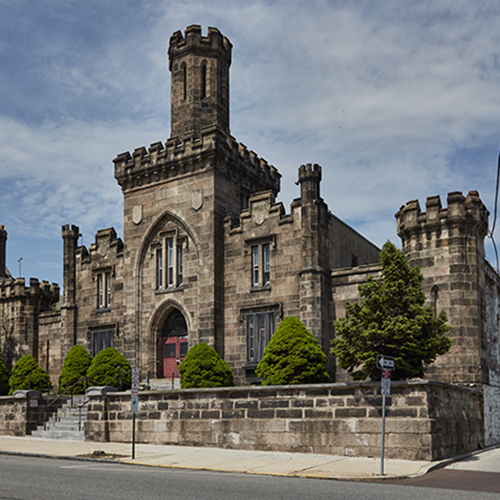
Old Montgomery County Prison (PA At Risk 2024)
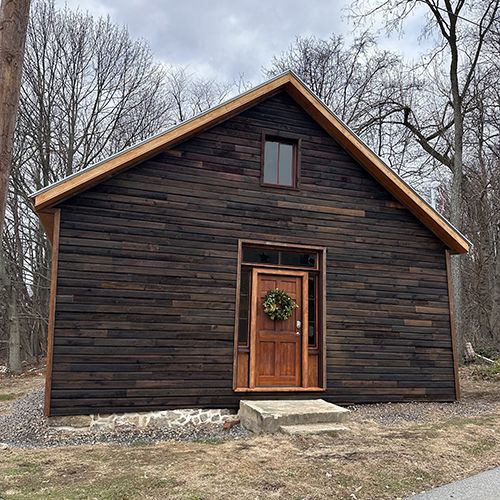
Mt. Tabor AME Church (PA At Risk 2018)
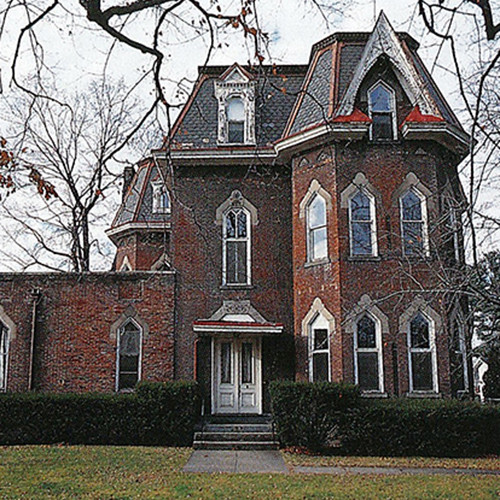
D. C. Herbst House (PA At Risk 2024)
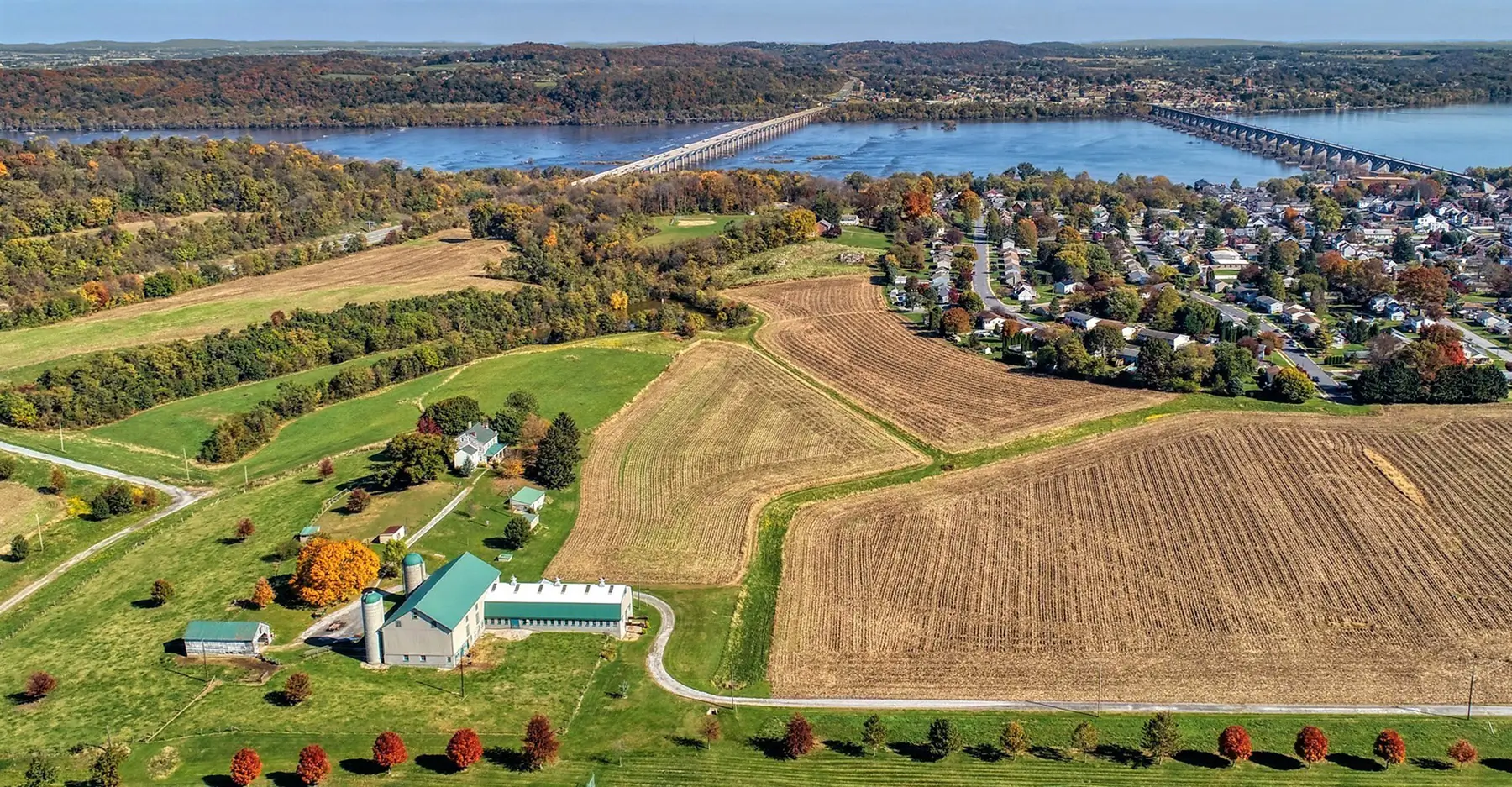
Mifflin House Farmstead (PA At Risk 2017)
For over 30 years, Pennsylvania At Risk has been a key initiative of Preservation Pennsylvania, the state’s only nonprofit dedicated to protecting historic places. Launched in 1992, the annual list highlights endangered historic properties across the commonwealth to raise public awareness, encourage local advocacy, and spur preservation action.
The program serves as a strategic tool for communities, drawing statewide attention to at-risk historic resources while promoting solutions that range from funding support to legislative change. Properties featured on the list are selected based on the severity of the threat, the presence of local advocates, and the potential for Preservation Pennsylvania to make a meaningful difference.
To support these efforts, Preservation Pennsylvania waives field service fees for listed properties and provides additional assistance, including letters of support for Keystone Grant and other funding applications, and connections to preservation professionals who may offer pro bono services.
The threats to these properties – such as inappropriate alteration, compromised setting, physical deterioration or demolition – require tailored responses. Preservation Pennsylvania works directly with property owners, local advocates, and other stakeholders to develop action plans aimed at long-term protection.
Through Pennsylvania At Risk (#PAatRisk), the organization not only identifies pressing preservation challenges but also empowers local efforts with tools, visibility and expert guidance to help save the places Pennsylvanians care about most.
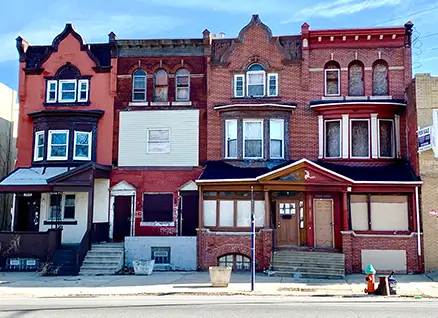
John Coltrane House (PA At Risk 2020)
PENNSYLVANIA AT RISK NEWSLETTER ARCHIVE
Interested to learn about the properties previously featured in our At Risk list, as well as status updates on those properties? Click a cover below to access that year’s At Risk newsletter.


